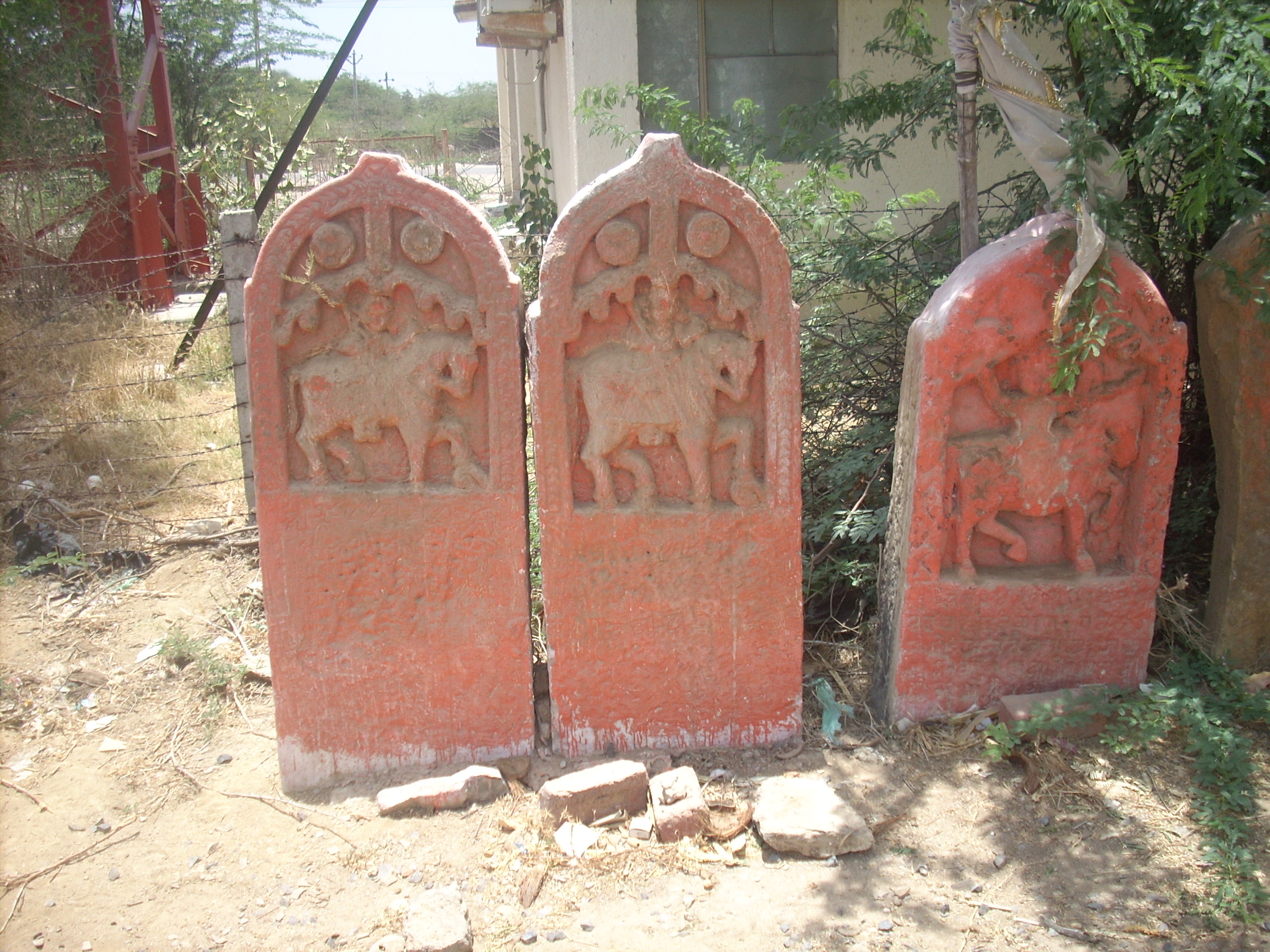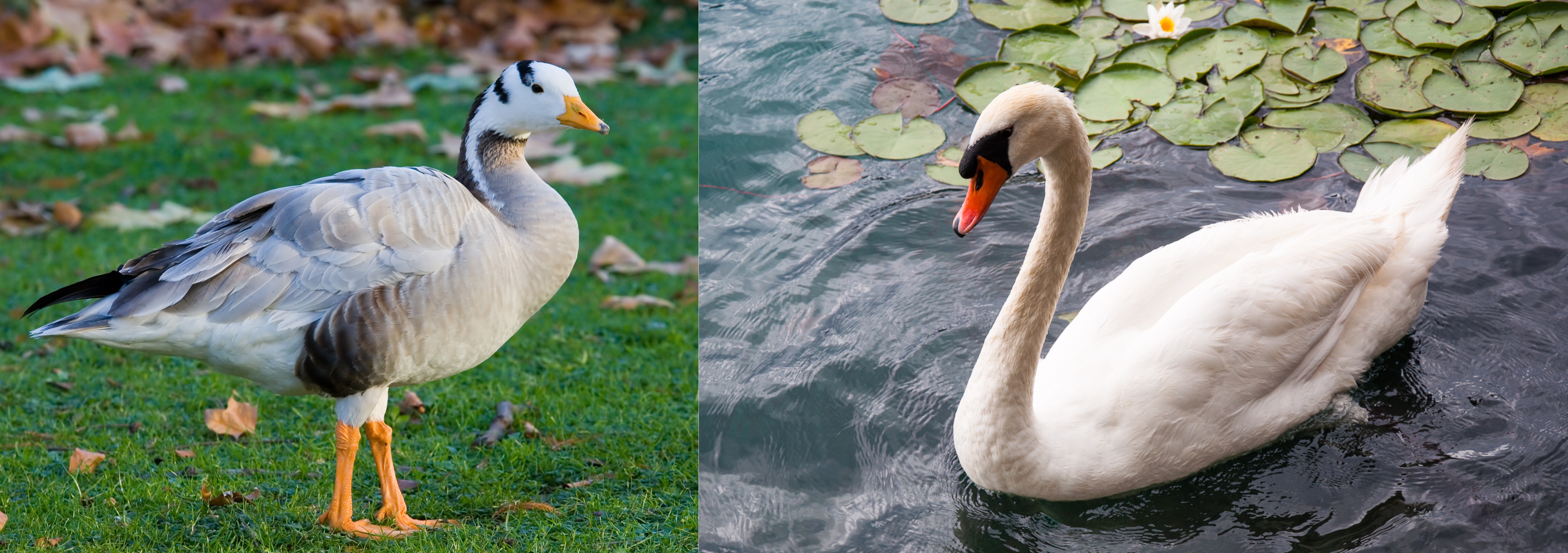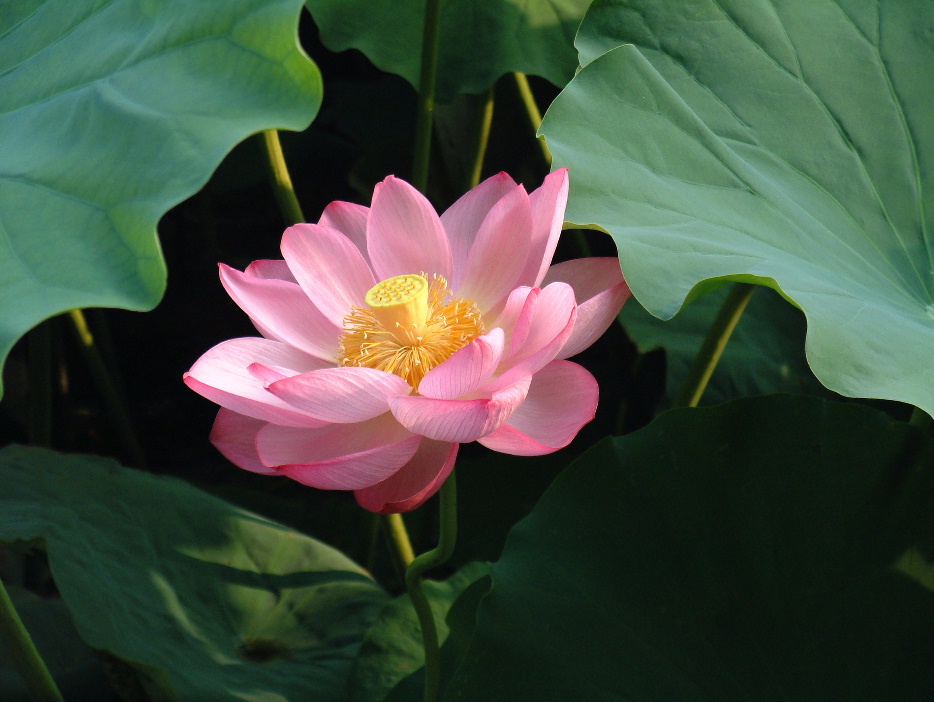|
Brahmani (Matrika)
Brahmani (Sanskrit: ब्रह्माणी, IAST: Brahmāṇī) or Brahmi (Sanskrit: ब्राह्मी, IAST: Brāhmī), is one of the seven Hindu mother goddesses known as Sapta Matrikas. She is a form of Saraswati and is considered as the Shakti of the creator god Brahma in Hinduism. She is an aspect of Adi Shakti, possessing the "Rajas Guna" and is therefore the source of Brahma's power. Legends When Brahma was in meditation for the creation of the universe, his body was divided into two parts. They then formed the gods and goddesses, whereby one part was male and the another was female. Thus female parts became Gayatri, Sati Savitri, Saraswati, and others. In folklore, Brahmani was once reincarnated as the princess of the Illavaku clan. The king had two daughters, Renuka (incarnation of devi Brahmani) and the other being Sahastrakala. Once at the banks of Sarasvati river, sage Jamadagni and the king held the Svayamvara for Renuka and she married the sage. ... [...More Info...] [...Related Items...] OR: [Wikipedia] [Google] [Baidu] |
Brahma
Brahma ( sa, ब्रह्मा, Brahmā) is a Hindu god, referred to as "the Creator" within the Trimurti, the trinity of supreme divinity that includes Vishnu, and Shiva.Jan Gonda (1969)The Hindu Trinity Anthropos, Bd 63/64, H 1/2, pp. 212–226. He is associated with creation, knowledge, and the ''Vedas''. Brahma is prominently mentioned in creation legends. In some ''Puranas'', he created himself in a golden embryo known as the Hiranyagarbha. Brahma is frequently identified with the Vedic god Prajapati.;David Leeming (2005), The Oxford Companion to World Mythology, Oxford University Press, , page 54, Quote: "Especially in the Vedanta Hindu Philosophy, Brahman is the Absolute. In the Upanishads, Brahman becomes the eternal first cause, present everywhere and nowhere, always and never. Brahman can be incarnated in Brahma, in Vishnu, in Shiva. To put it another way, everything that is, owes its existence to Brahman. In this sense, Hinduism is ultimately monotheistic or m ... [...More Info...] [...Related Items...] OR: [Wikipedia] [Google] [Baidu] |
Bhrigu
Bhrigu ( sa, भृगु, ) was a rishi in Hinduism. He was one of the seven great sages, the Saptarshis, one of the many Prajapatis (the facilitators of Creation) created by Brahma. The first compiler of predictive astrology, and also the author of ''Bhrigu Samhita'', the astrological (Jyotish) classic, Bhrigu is considered a '' Manasa Putra'' ("mind-born-son") of Brahma. The adjectival form of the name, ''Bhargava'', is used to refer to the descendants and the school of Bhrigu. According to ''Manusmriti'', Bhrigu was a compatriot of and lived during the time of Manu, the Hindu progenitor of humanity. Bhrigu had his Ashram (Hermitage) on the Vadhusar River, a tributary of the Drishadwati River near Dhosi Hill in the Vedic state of Brahmavarta, presently on the border of Haryana and Rajasthan in India. Along with Manu, Bhrigu had made important contributions to ''Manusmriti'', which was constituted out of a sermon to a congregation of saints in the state of Brahmavarta, af ... [...More Info...] [...Related Items...] OR: [Wikipedia] [Google] [Baidu] |
KGK Community
Kutch Gurjar Kshatriya (also known as Mistri or Mestri) are a minority Hindu and one of the Socially and Educationally Backward communities of Gujarat in India, who claim to be Kshatriyas. They are an artisan community related with Kadia works. They are also known as the Mistri or Mistris of Kutch.Mistri Encyclopaedia of Backward Castes By Neelam Yadav Page 316. History [...More Info...] [...Related Items...] OR: [Wikipedia] [Google] [Baidu] |
Dodiya
The Dodiya or Dodia or Dohar is Rajput clan found in Gujarat, Madhya Pradesh (Malwa) and in lesser numbers, in Sardargarh, Rajasthan Rajasthan (; lit. 'Land of Kings') is a state in northern India. It covers or 10.4 per cent of India's total geographical area. It is the largest Indian state by area and the seventh largest by population. It is on India's northwestern si .... They have ruling states in Madhya Pradesh Piploda princely state, Tal, Mandawal, Borwana, Asawati, uni, Sukheda, Chapaner and many more villages. Dodiya rajputs are also found in Mewar (Sardarghar), where they fought bravely with Maharana against enemies. References {{reflist Rajput clans Social groups of Rajasthan History of Gujarat Rajput clans of Gujarat ... [...More Info...] [...Related Items...] OR: [Wikipedia] [Google] [Baidu] |
Kuldevi
A kuladevatā (), also known as a kuladaivaṃ, is an ancestral tutelary deity in Hinduism and Jainism. Such a deity is often the object of one's devotion (''bhakti''), and is coaxed to watch over one's clan (''kula''), gotra, family, and children from misfortune. This is distinct from an '' ishta-devata'' (personal tutelar) and a grāmadevatā (village deities). Male kuladevatas are sometimes referred to as a kuladeva, while their female counterparts are called a kuladevi. Etymology The word ''kuladevata'' is derived from two words: ''kula'', meaning clan, and ''devata'', meaning deity, referring to the ancestral deities that are worshipped by particular clans. Veneration The deity can be represented in a male or a female human, an animal, or even an object, like a holy stone. It is believed that rituals done at a kuladeva/kuladevi temple benefits all those genetically connected with the one performing the ritual. Kuladaivams of the Shaiva tradition are often considered ... [...More Info...] [...Related Items...] OR: [Wikipedia] [Google] [Baidu] |
Vahana
''Vahana'' ( sa, वाहन, or animal vehicle, literally "that which carries, that which pulls") denotes the being, typically an animal or mythical, a particular Hindus, Hindu God is said to use as a vehicle. In this capacity, the vahana is often called the deity's "mount". Upon the partnership between the deity and his vahana is woven much Hindu iconography, iconography and Hindu mythology, Hindu theology. Deities are often depicted riding (or simply mounted upon) the vahana. Other times, the vahana is depicted at the deity's side or symbolically represented as a divine attribute. The vahana may be considered an :wikt:accoutrement, accoutrement of the deity: though the vahana may act independently, they are still functionally emblematic or even :wikt:syntagmatic, syntagmatic of their "rider". The deity may be seen sitting or standing on the vahana. They may be sitting on a small platform, or riding on a saddle or bareback. [...More Info...] [...Related Items...] OR: [Wikipedia] [Google] [Baidu] |
Hamsa Bird
The hamsa (Sanskrit: हंस ' or ''hansa'') is an aquatic migratory bird, referred to in ancient Sanskrit texts which various scholars have interpreted as being based on the goose, the swan, or even the flamingo. Its image is used in Indian and Southeast Asian culture as a spiritual symbol and a decorative element. It is also used in a metaphorical sense with the bird attributed with the mythical ability to extract milk from a mixture of milk and water or good from evil. In Hindu iconography, ''hamsa'' is the vahana (or ''vehicle'') of Brahma, Gayatri, Saraswati, and Vishvakarma. Identification Asian language professor Monier Williams translates the term from Sanskrit as "a goose, gander, swan, flamingo (or other aquatic bird, considered as a bird of passage igratory bird...)." The word is also used for a mythical or poetical bird with knowledge. In the Rig Veda, it is the bird which is able to separate Soma from water, when mixed; in later Indian literature, the bird sep ... [...More Info...] [...Related Items...] OR: [Wikipedia] [Google] [Baidu] |
Trident
A trident is a three- pronged spear. It is used for spear fishing and historically as a polearm. The trident is the weapon of Poseidon, or Neptune, the God of the Sea in classical mythology. The trident may occasionally be held by other marine divinities such as Tritons in classical art. Tridents are also depicted in medieval heraldry, sometimes held by a merman-Triton. In Hinduism, it is the weapon of Shiva, known as ''trishula'' (Sanskrit for "triple-spear"). Etymology The word "trident" comes from the French word ''trident'', which in turn comes from the Latin word ' or ': ''tri'' meaning "three" and ''dentes'' meaning "teeth", referring specifically to the three prongs, or "teeth", of the weapo The Greek language, Greek equivalent is (''tríaina''), from Proto-Greek ''trianja'', meaning "threefold". The Greek term does not imply three of anything specific, and is vague about the shape, thus the assumption it was originally of "trident" form has been challenged. Latin ... [...More Info...] [...Related Items...] OR: [Wikipedia] [Google] [Baidu] |
Vedas
upright=1.2, The Vedas are ancient Sanskrit texts of Hinduism. Above: A page from the '' Atharvaveda''. The Vedas (, , ) are a large body of religious texts originating in ancient India. Composed in Vedic Sanskrit, the texts constitute the oldest layer of Sanskrit literature and the oldest scriptures of Hinduism. There are four Vedas: the Rigveda, the Yajurveda, the Samaveda and the Atharvaveda. Each Veda has four subdivisions – the Samhitas (mantras and benedictions), the Aranyakas (text on rituals, ceremonies, sacrifices and symbolic-sacrifices), the Brahmanas (commentaries on rituals, ceremonies and sacrifices), and the Upanishads (texts discussing meditation, philosophy and spiritual knowledge).Gavin Flood (1996), ''An Introduction to Hinduism'', Cambridge University Press, , pp. 35–39A Bhattacharya (2006), ''Hindu Dharma: Introduction to Scriptures and Theology'', , pp. 8–14; George M. Williams (2003), Handbook of Hindu Mythology, Oxford University Press, , p ... [...More Info...] [...Related Items...] OR: [Wikipedia] [Google] [Baidu] |
Padma (attribute)
The lotus, ''Nelumbo nucifera'', is an aquatic plant that plays a central role in the art of Indian religions such as Hinduism, Buddhism, Jainism and Sikhism. In Asian art a lotus throne is a stylized lotus flower used as the seat or base for a figure. It is the normal pedestal for divine figures in Buddhist art and Hindu art, and often seen in Jain art. Originating in Indian art, it followed Indian religions to East Asia in particular. Hinduism Hindus revere it with the divinities Vishnu and Lakshmi often portrayed on a pink lotus in iconography; historically, many deities, namely Brahma, Saraswati, Lakshmi, Kubera, usually sit on a stylized lotus throne. In the representation of Vishnu as Padmanabha (Lotus navel), a lotus issues from his navel with Brahma on it. The goddess Saraswati is portrayed on a pale pink lotus. The lotus is the symbol of what is divine or immortal in humanity, and also symbolizes divine perfection. The lotus is the attribute of sun and fire gods. I ... [...More Info...] [...Related Items...] OR: [Wikipedia] [Google] [Baidu] |
Kamandalu
Kamandalu (Sanskrit: कमण्डलु, ) or kamandal or kamandalam is an oblong water pot, originating from the Indian subcontinent, made of a dry gourd (pumpkin) or coconut shell, metal, wood of the Kamandalataru tree, or from clay, usually with a handle and sometimes with a spout. Hindu ascetics or yogis often use it for storing drinking water. The water-filled kamandalu, which is invariably carried by ascetics, is stated to represent a simple and self-contained life. The ''kamandalu'' also used in Hindu iconography, in depiction of deities related with asceticism or water. It is, thus, viewed as a symbol of ascetism in Hinduism. The ''kamandalu'' is also used by Jain monks and in depictions of some bodhisattvas. Method of making The ''kamandalu'' may be made of various materials, including metal, clay, wood and dry gourd. For making the gourd ''kamandalu'', a ripe pumpkin is plucked and the inner plum and seeds are cleaned. This leaves only the outer shell, which is used ... [...More Info...] [...Related Items...] OR: [Wikipedia] [Google] [Baidu] |
Japamala
A japamala, , or simply mala ( sa, माला; , meaning 'garland') is a loop of prayer beads commonly used in Indian religions such as Hinduism, Jainism, Sikhism, and Buddhism for counting recitations when performing ''japa'' (reciting a mantra or other sacred sound) or for counting some other '' sadhana'' (spiritual practice) such as prostrating before a holy icon. They are similar to other forms of prayer beads used in various world religions and are sometimes referred to in Christianity as a "rosary". The main body of a mala is usually 108 beads of roughly the same size and material as each other though smaller versions, often factors of 108 such as 54 or 27, exist. A distinctive 109th "guru bead", not used for counting, is very common. Mala beads have traditionally been made of a variety of materials such as wood, stone, seeds, bone and precious metals—with various religions often favouring certain materials—and strung with natural fibres such as cotton, silk, or a ... [...More Info...] [...Related Items...] OR: [Wikipedia] [Google] [Baidu] |










